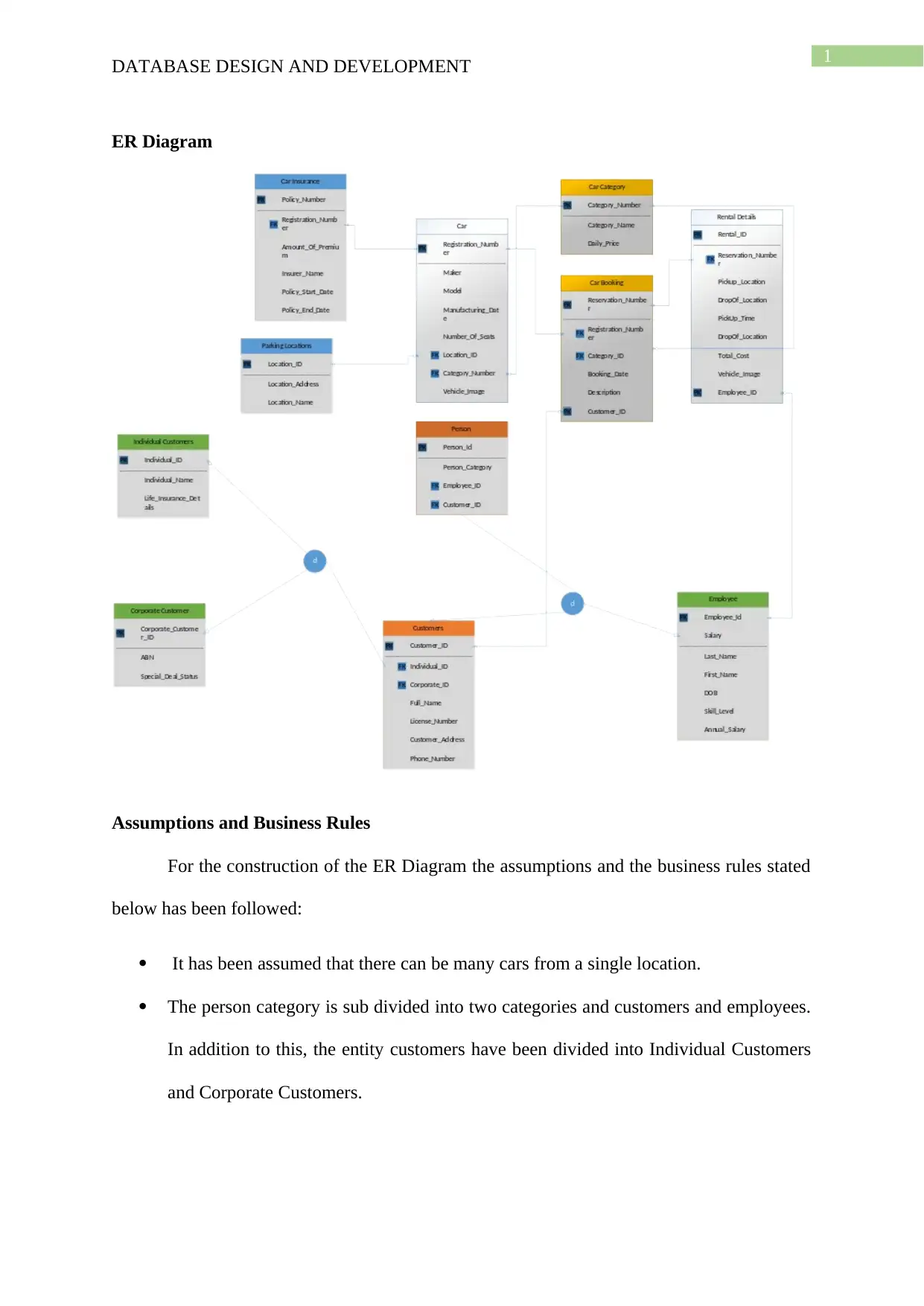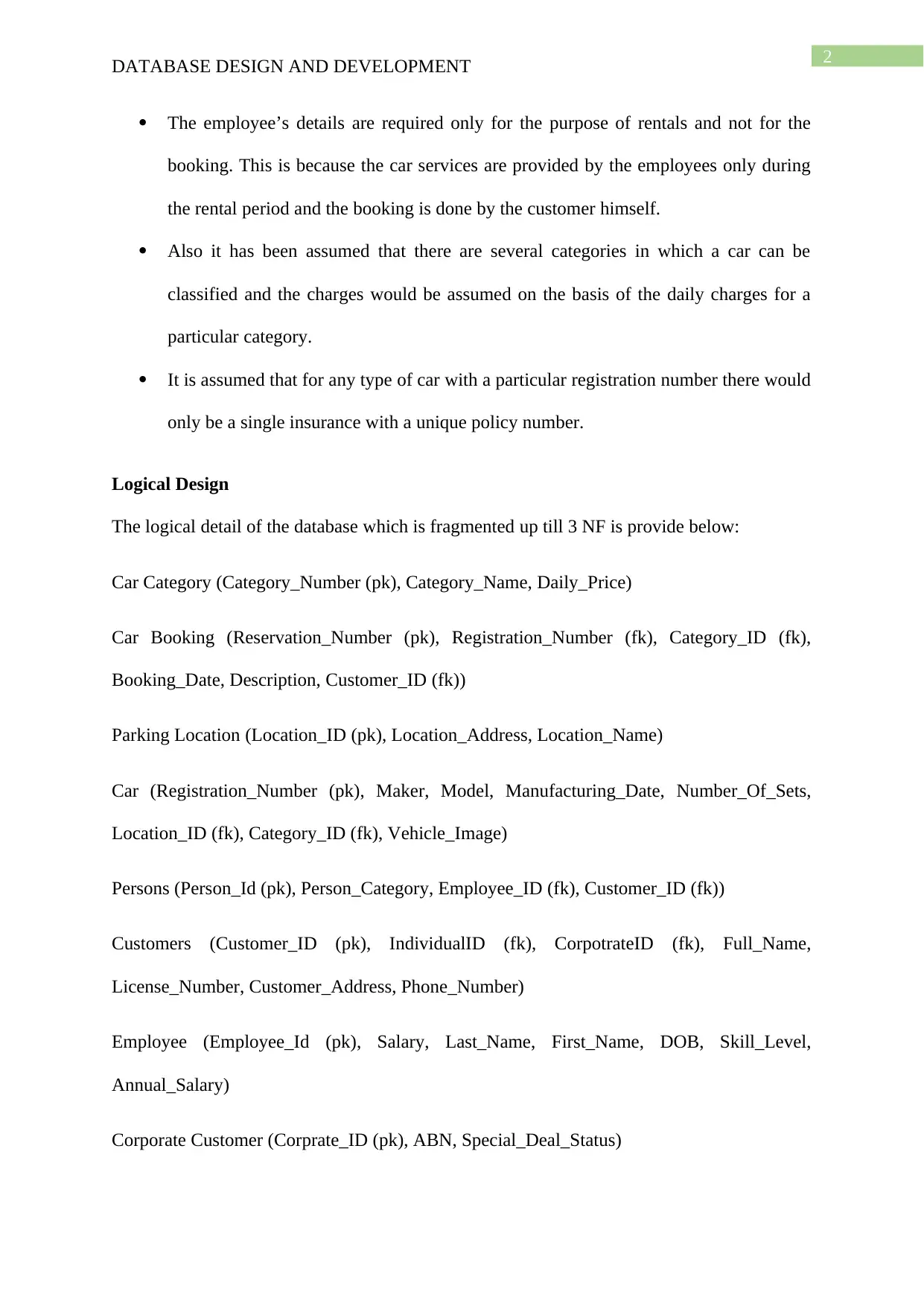QRentals Database Design and Development Assignment - COIT20247
VerifiedAdded on 2023/06/08
|5
|503
|402
Homework Assignment
AI Summary
This assignment solution focuses on the database design and development for a car rental system, specifically the QRentals case study. The solution includes an Entity Relationship (ER) diagram representing the conceptual data model, detailing entities such as cars, customers, employees, and rental activities, along with their attributes and relationships. The document then proceeds with a logical design, breaking down the database into 3NF relations, including tables for car categories, bookings, locations, cars, persons, customers, employees, and rental details. The ER diagram incorporates assumptions and business rules, such as multiple cars per location and different customer and employee categories. The logical design provides table structures with primary and foreign keys to ensure data integrity and efficient query processing. The assignment demonstrates a comprehensive approach to database design, ensuring that the database can effectively track vehicles, customers, employees, and rental activities for the QRentals business.
1 out of 5









![[object Object]](/_next/static/media/star-bottom.7253800d.svg)